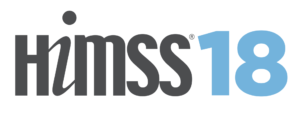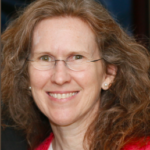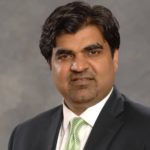 The Health Information and Management Systems Society (HIMSS) 2018 meeting took place in early March in Las Vegas with more than 40,000 attendees. The HIMSS annual meeting attracts Chief Executive Officers, Chief Information Officers, physicians, nurses, IT professionals, payers, and investors while offering opportunities for education, demonstration, and networking. High-profile keynote speakers, such as Steve Jobs in 1993, are a big draw. This year’s keynote included Eric Schmidt, former Google CEO and Alphabet executive chairman. I met with FMCNA Chief Medical Information Officer Dr. Ahmad Sharif to ask about HIMSS highlights.
The Health Information and Management Systems Society (HIMSS) 2018 meeting took place in early March in Las Vegas with more than 40,000 attendees. The HIMSS annual meeting attracts Chief Executive Officers, Chief Information Officers, physicians, nurses, IT professionals, payers, and investors while offering opportunities for education, demonstration, and networking. High-profile keynote speakers, such as Steve Jobs in 1993, are a big draw. This year’s keynote included Eric Schmidt, former Google CEO and Alphabet executive chairman. I met with FMCNA Chief Medical Information Officer Dr. Ahmad Sharif to ask about HIMSS highlights.
DWM: Why do you go to HIMSS?
Dr. Sharif: HIMSS started in the early 1960s as the Hospital Management Systems Society (HMSS) to share information about hospital systems. In 2001 HIMSS merged with the Center for Healthcare Management and became the HIMSS organization we know today. The annual meeting has grown enormously and now is the single place where it is possible to network with many frontline organizations on the cutting edge of Health Information Technology (HIT) to hear how they are solving problems. The meeting provides an efficient way to see and learn about “new to market” HIT products with over 1,400 vendors present in the exhibit hall. In addition, HIMSS always has notable keynote speakers. This year I heard Eric Schmidt from Google and Seema Verma from CMS speak about the future of HIT.
DWM: What was the main HIMSS theme this year?
Dr. Sharif: The big theme was interoperability. Figuring out how to get HIT systems talking to each other will be critical, especially in value-based care where coordinated care delivery is needed to address the total cost and quality of care delivered. HIMSS Seema Verma and Jared Kushner (on behalf of CMS and the White House) pledged to reduce regulatory burdens for HIT, including decreasing Meaningful Use requirements and pushing for greater interoperability.
The exhibit hall at HIMSS included an “Interoperability Showcase” demonstrating a fully interoperable HIT ecosystem. I participated in the showcase and saw patient data moving in real time among various care settings including hospital services, urgent care services, outpatient clinics, and care coordination. Big vendors like Cerner and Centricity were involved in creating the data flow that is patient-centered, not transactional-based.
DWM: What new ideas and systems did you see at HIMSS?
Dr. Sharif: I was excited to see “listening rooms” designed to free providers from documenting on a computer during a patient encounter. Microsoft and the University of Pittsburgh Medical Center (UPMC) unveiled a virtual artificial intelligence (AI) “assistant” that listens and takes notes during a patient visit. This is not only a voice recognition tool to capture the encounter, but the AI “assistant” analyzes the conversation and “suggests” documentation for the EHR note, including the list of diagnoses and the treatment plan. This is early use of AI to improve the patient-provider relationship and relieve the documentation burden.
Microsoft is emerging as a big player in healthcare technology with the Healthcare NExT Program, which also focuses on alleviating the documentation burden to improve the experience of doctors and nurses. The first step in managing healthcare data is safe data transfer and storage, which Microsoft is addressing with the Azure Cloud Platform. Large amounts of data can be stored in the cloud and accessed for building new HIT tools. Microsoft partners with institutions like UPMC to build machine-learning tools as part of a technology revolution for providers. I think we’ll see more software tools in the future to improve the point-of-care experience for both providers and patients.
DWM: What is happening with FHIR?
Dr. Sharif: Everyone is talking about Fast Healthcare Interoperability Resources (FHIR) standards and adopting these open-source standards for healthcare information exchange. Key to interoperability and the seamless exchange of data, FHIR allows for workflow-centric import and export of data which is a big improvement over typical document exchange. It’s good to see that almost everyone is getting on board with FHIR standards. Such standards support new resource development that can be widely used.
DWM: What should we watch for in the next year?
Dr. Sharif: I think we will continue to see healthcare intersect with consumerist technology we use in our non-healthcare lives. Technology companies like Amazon and Google will become bigger players in healthcare technology development, helping to solve existing healthcare use cases. They will raise the bar, forcing traditional healthcare organizations to ask what do we need to do to provide the same level of service in healthcare? For example, Amazon is a master at group purchasing and cloud data storage. In healthcare, how can we leverage group purchasing to lower costs for medical equipment, medications, and durable goods? How can we maximize data use and analysis through cloud storage? How can we create an enjoyable customer experience like Apple does? Can we use Uber and Lyft to address patient transportation problems or Airbnb to provide housing solutions? It is good to see some of these innovative and powerful companies entering the complex healthcare space.
We can keep an eye on blockchain, but it still looks like a fascinating technology searching for a healthcare use case. Blockchain may appear to be useful in authenticating patient identification across an HIT ecosystem, for example, but no one is able to use it for that today.
DWM: Will you return to HIMSS next year?
Dr. Sharif: I will make it a priority to return. I think the size of HIMSS at over 40,000 participants speaks to the energy and excitement around HIT today. Information technology is changing healthcare delivery and patient experience, especially as interoperability improves coordinated care delivery—and patient-centered coordinated care is good for both patients and providers. It’s exciting to see interest from Microsoft, Amazon, and other innovative companies in solving problems like medical-record documentation and provider support. I have high hopes for bigger and better ideas in 2019!
 Dugan Maddux, MD, FACP, is the Vice President for CKD Initiatives for FMC-NA. Before her foray into the business side of medicine, Dr. Maddux spent 18 years practicing nephrology in Danville, Virginia. During this time, she and her husband, Dr. Frank Maddux, developed a nephrology-focused Electronic Health Record. She and Frank also developed Voice Expeditions, which features the Nephrology Oral History project, a collection of interviews of the early dialysis pioneers.
Dugan Maddux, MD, FACP, is the Vice President for CKD Initiatives for FMC-NA. Before her foray into the business side of medicine, Dr. Maddux spent 18 years practicing nephrology in Danville, Virginia. During this time, she and her husband, Dr. Frank Maddux, developed a nephrology-focused Electronic Health Record. She and Frank also developed Voice Expeditions, which features the Nephrology Oral History project, a collection of interviews of the early dialysis pioneers.
 Ahmad Sharif, MD, MPH, is Sr. Vice President and Chief Medical Information Officer of Fresenius Medical Care North America. Dr. Sharif was instrumental in bringing innovative tools and technology, fostering cross functional collaboration, and establishing change management procedures as Fresenius Kidney Care’s VP of Clinical Health Information Technology. Dr. Sharif has extensive experience in health information technology, consulting with over 25 health systems across the country and abroad, implementing and optimizing electronic health records, clinical practice management and technology solutions for multi-facility large academic institutions and smaller community and critical access hospitals. He is a big proponent of user-centered design and is currently engaged in projects to improve clinical and operational outcomes by use of clinician focused technology solutions.
Ahmad Sharif, MD, MPH, is Sr. Vice President and Chief Medical Information Officer of Fresenius Medical Care North America. Dr. Sharif was instrumental in bringing innovative tools and technology, fostering cross functional collaboration, and establishing change management procedures as Fresenius Kidney Care’s VP of Clinical Health Information Technology. Dr. Sharif has extensive experience in health information technology, consulting with over 25 health systems across the country and abroad, implementing and optimizing electronic health records, clinical practice management and technology solutions for multi-facility large academic institutions and smaller community and critical access hospitals. He is a big proponent of user-centered design and is currently engaged in projects to improve clinical and operational outcomes by use of clinician focused technology solutions.



Leave a Reply